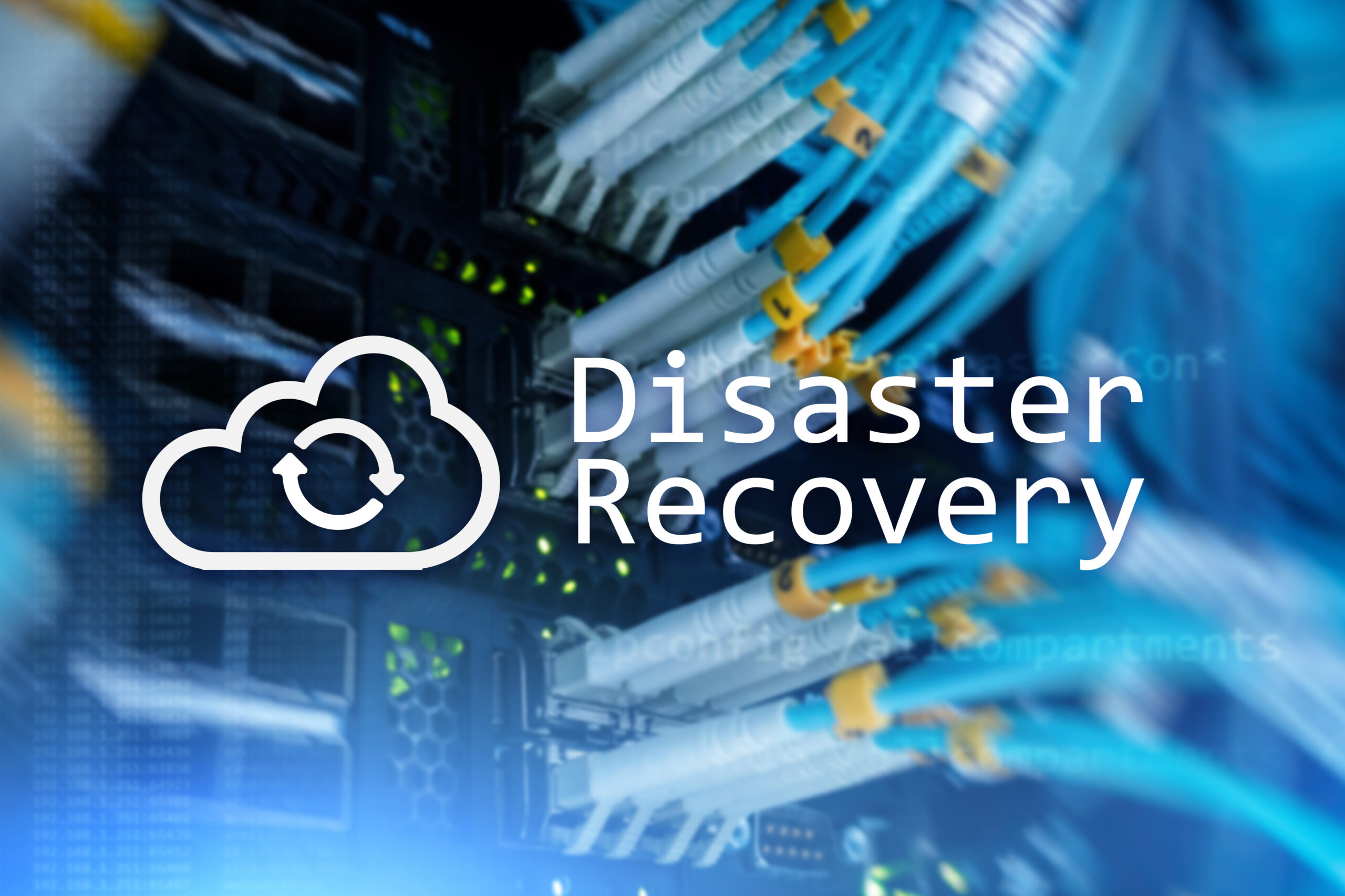Disaster recovery is a critical aspect of business continuity, ensuring that organizations can effectively navigate and recover from unexpected events. In this article, we will delve into the concept of disaster recovery, exploring what it entails and why it is essential for business owners to understand. By gaining insights into the principles and strategies of disaster recovery, business owners can proactively safeguard their operations, minimize downtime, and maintain the resilience needed to thrive in the face of adversity.
What is Disaster Recovery?
Disaster recovery refers to the process of implementing strategies and procedures to resume normal business operations after a significant interruption or disaster. These interruptions can be caused by a wide range of events, such as natural disasters (e.g., hurricanes, earthquakes), cyber-attacks, power outages, equipment failures, or even human errors.
The goal of disaster recovery is to minimize downtime and data loss, ensuring that critical business functions can be quickly restored and resumed. It involves a comprehensive approach that includes not only the restoration of physical infrastructure and technology systems but also the recovery of essential data and applications.
Why is Disaster Recovery Important for Business Owners?
1. Minimize Downtime:
Downtime can be extremely costly for businesses, leading to lost revenue, dissatisfied customers, and a damaged reputation. By having a disaster recovery plan in place, you can significantly reduce downtime and ensure that your business can quickly recover and resume operations.
2. Protect Data and Information:
Data loss can have severe consequences for businesses, ranging from financial loss to legal and regulatory compliance issues. Disaster recovery strategies include regular backups, secure storage, and data replication, ensuring that critical data is protected and can be quickly restored in the event of a disaster.
3. Maintain Business Continuity:
Disasters can strike at any time, and without a proper disaster recovery plan, businesses may struggle to maintain continuity. A well-designed disaster recovery plan ensures that essential business functions can continue, even in the face of disruption. This allows businesses to remain operational, serve customers, and meet their obligations, minimizing the impact of a disaster on their bottom line.
4. Mitigate Financial Loss:
The financial implications of a disaster can be significant. In addition to the costs associated with downtime and data loss, businesses may also incur expenses for repairs, replacements, and recovery efforts. By implementing effective disaster recovery measures, business owners can mitigate financial losses and protect their bottom line.
5. Enhance Customer Confidence:
When a disaster strikes, customers rely on businesses to be responsive and capable of meeting their needs. By having a robust disaster recovery plan in place, businesses can demonstrate their commitment to customer service and build trust and confidence with their customers.
What are the Challenges Associated with Disaster Recovery?
Price
Putting in place a comprehensive disaster recovery plan can be costly. It necessitates the purchase of backup and recovery hardware, software, and infrastructure. Furthermore, continual maintenance and testing of the disaster recovery strategy might increase expenditures. When it comes to investing in disaster recovery solutions, many small and medium-sized enterprises encounter budget limits.
Planning
Creating and implementing a disaster recovery plan can be difficult, particularly for firms with complex IT infrastructures. It necessitates a thorough knowledge of the organization’s systems, applications, and data dependencies. Coordination with many stakeholders, such as IT teams, vendors, and business units, can make the process even more complicated. To ensure that all important systems and data are appropriately protected and recoverable in a timely way, thorough planning and regular updates are required.
Time
When it comes to catastrophe recovery, time is of the importance. To minimize downtime and financial losses, businesses must recover their systems and restart operations as soon as feasible. Rapid recovery, on the other hand, might be difficult, especially if the business has a huge volume of data or complicated systems. It might take time to restore data and get systems back online, and any delays can have serious ramifications for the firm. As a result, organizations must emphasize efficient and rapid recovery procedures in order to mitigate the impact of a disaster.
Data Security
Data is frequently the lifeblood of businesses; therefore, safeguarding it during a disaster is critical. However, assuring data integrity and availability can be difficult. Backing up data on a regular and secure basis is vital, but it is also critical to test the backups to ensure they can be successfully restored. Businesses must consider variables such as data encryption, off-site storage, and data replication to ensure the security of their critical information.
Technology Changes
Technology is constantly developing, and businesses must adapt to ensure their disaster recovery methods remain effective. Cloud computing and virtualization, for example, offer more adaptable and effective disaster recovery solutions. However, installing and integrating new technology can be tough, especially for businesses with outdated systems. Businesses may stay prepared for future disasters by examining and improving their disaster recovery plans on a regular basis to incorporate new technologies.
How Can Business Owners Ensure Effective Disaster Recovery?
1. Conduct a Business Impact Analysis:
A business impact analysis helps identify critical business functions, dependencies, and the potential impact of disruptions. This analysis forms the foundation for developing a disaster recovery plan tailored to the specific needs of the business.
2. Develop a Comprehensive Plan:
A disaster recovery plan should outline the necessary steps, procedures, and resources required to recover and resume business operations. It should include strategies for data backup and recovery, system restoration, communication, and employee safety.
3. Test and Update The Plan:
Regular testing and updating of the disaster recovery plan is crucial to ensure its effectiveness. Business owners should conduct regular drills and simulations to assess the plan’s readiness and identify any areas for improvement. Additionally, the plan should be continuously updated to reflect changes in the business environment, technology, and potential threats.
4. Secure Data and Systems:
Business owners should implement robust security measures to protect their data and systems from potential disasters, such as cyberattacks or physical damage. This may include data encryption, firewalls, antivirus software, and regular system backups.
5. Train Employees:
Employees play a crucial role in disaster recovery. Business owners should provide comprehensive training to employees on the disaster recovery plan, their roles and responsibilities, and emergency procedures. This ensures that everyone is prepared and knows what to do in the event of a disaster.
6. Establish Communication Channels:
Effective communication is essential during a disaster. Business owners should establish multiple communication channels, both internal and external, to ensure timely and accurate information sharing. This may include phone systems, email, instant messaging platforms, and social media.
7. Partner With Disaster Recovery Service Providers:
Business owners can also consider partnering with disaster recovery service providers. These providers specialize in disaster recovery and can offer expertise, resources, and support in case of a disaster. They can help businesses develop and implement a comprehensive disaster recovery plan, provide secure storage and backup solutions, and assist in the recovery process.
What Types of Disasters Require Disaster Recovery?
1. Natural disasters:
Events such as hurricanes, earthquakes, floods, wildfires, and severe storms can cause significant damage to physical infrastructure, disrupt power supply, and lead to extended downtime. Having a disaster recovery plan allows businesses to quickly assess the impact, prioritize recovery efforts, and resume operations as soon as possible.
2. Cybersecurity incidents:
With the rise of digitalization, cyber threats have become a significant concern for businesses. Malware, data breaches, ransomware, and distributed denial of service (DDoS) attacks can jeopardize sensitive information, impair vital systems, and result in financial and reputational damages. In order to mitigate the impact of such disasters, disaster recovery plans that include regular data backups, network security measures, and incident response methods are required.
3. Equipment or system failures:
Hardware failures, software glitches, or network outages can occur unexpectedly, causing disruptions to business operations. Whether it is a server crash, a failed software update, or a communication network breakdown, having a disaster recovery plan ensures that businesses have redundant systems in place, backup solutions, and well-defined procedures to promptly restore services.
What Technologies are Used for Disaster Recovery?
Data Backup and Recovery
One of the fundamental technologies for disaster recovery is data backup. It involves creating copies of critical data and storing them in separate locations, either on-premises or in the cloud. Backup solutions can include tape drives, external hard drives, network-attached storage (NAS), or online backup services. These technologies ensure that data can be restored quickly and accurately after a disaster.
Replication
Replication technology involves creating and maintaining an exact copy of data, applications, or systems in real-time. It ensures that there is a redundant copy available at a separate location, ready to take over in case of a primary system failure. Replication can be synchronous, where data is mirrored immediately, or asynchronous, where there is a slight delay between the primary and secondary copies.
Virtualization
Businesses can use virtualization technology to build virtual clones of actual servers, storage devices, or operating systems. Virtualization enables businesses to swiftly restore important systems and applications on virtual machines in a disaster recovery scenario, removing the need for real hardware. Virtualization also improves flexibility and scalability by allowing firms to simply modify resources to meet their demands.
Cloud Computing
Cloud computing has revolutionized disaster recovery by offering scalable, flexible, and cost-effective solutions. With cloud-based disaster recovery, businesses can replicate their data and systems in the cloud, ensuring that they have access to their critical resources even if their on-premises infrastructure is compromised. Cloud-based disaster recovery also allows for easy and quick recovery, as businesses can spin up virtual machines or restore data from the cloud with minimal downtime.
High Availability Clustering
High availability clustering involves grouping multiple servers or systems together to create a unified and fault-tolerant environment. In the event of a failure, the workload is automatically distributed among the available servers, ensuring uninterrupted access to critical services. High availability clustering can be implemented at both the hardware and software levels, providing businesses with robust and reliable disaster recovery capabilities.
Network Redundancy
Network redundancy ensures that there are alternative paths or connections available in case of a network failure. This technology involves having multiple network links, routers, or switches, so if one fails, the traffic can automatically reroute through another path. Network redundancy plays a vital role in disaster recovery, as it ensures that business operations can continue even if there is a disruption in the network infrastructure.
Conclusion
In conclusion, disaster recovery is not just a contingency plan but a crucial component of business resilience. By understanding what disaster recovery is and implementing effective strategies, business owners can mitigate the impact of unforeseen events and ensure the continuity of their operations. From data backup and restoration to developing comprehensive recovery plans, investing in disaster recovery measures is an investment in the long-term success and sustainability of a business. By prioritizing disaster recovery, business owners can navigate through challenging times with confidence, knowing that they have the tools and strategies in place to recover swiftly and continue thriving.
Final Thoughts
Buzz Cybersecurity stands at the forefront of the ever-evolving cybersecurity landscape, renowned for its exceptional services. Our extensive portfolio encompasses managed IT services, cloud solutions, disaster recovery, and managed detection and response, all delivered with utmost professionalism. What sets us apart is our dedication to surpassing expectations, as we extend our cybersecurity expertise to businesses in neighboring states. Experience the unwavering protection and commitment of Buzz Cybersecurity by reaching out to us today.
Sources


